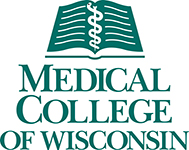Care of the trauma patient in the age of the human immunodeficiency virus. Surg Clin North Am 1995 Apr;75(2):327-34
Date
04/01/1995Pubmed ID
7900001DOI
10.1016/s0039-6109(16)46591-6Scopus ID
2-s2.0-0028943615 (requires institutional sign-in at Scopus site) 3 CitationsAbstract
HIV-infected patients will be seen in emergency rooms and trauma centers because the number of infected patients is large and growing. Proper precautions by health care workers are effective in decreasing risk of transmission to a very low level, and, therefore, the fear of HIV should not dissuade the medical profession from giving these individuals proper care. Operative treatments should not be arbitrarily rejected simply because an HIV infection is detected because poor wound healing and infection appear to be much less of a risk than predicted. Unusual infections and intercurrent medical problems may require additional attentiveness to detect their existence and may require more complex treatment regimens to control.
Author List
Quebbeman EJMESH terms used to index this publication - Major topics in bold
Acquired Immunodeficiency SyndromeEmergencies
Emergency Service, Hospital
Humans
Postoperative Care
Prevalence
Risk Factors
United States
Wounds and Injuries









